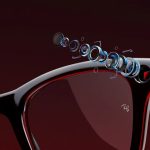Fatty liver disease silently affects many Americans today, and alcohol consumption has been shown to be a common cause.1 It’s become so prevalent, I’ve written a paper about it to help readers understand the importance of liver for overall health, as well as strategies to help you boost liver function. The paper is currently under peer review, but you can download the preprint version below.

Left untreated, liver function becomes impaired, increasing your risk of scar tissue formation. According to the Cleveland Clinic, 90% of those who develop liver cancer have cirrhosis.2
Acting early is critical. Research shows clearly that catching liver damage early leads to nearly complete recovery, while more advanced damage like fibrosis or cirrhosis can show limited improvement. The speed and completeness of your recovery depend heavily on when you decide to quit alcohol and how you support your body afterward.
A Timeline of Your Liver’s Health After Stopping Drinking
Your liver begins healing remarkably fast once you stop drinking alcohol. According to The Hearty Soul, here’s what your liver will look like within the following timeline:3
• First 24 hours — Your liver breathes a sigh of relief. Within hours, inflammation biomarkers begin to drop, and your liver cells return to their original role instead of fighting the alcohol within your system. While you won’t notice it, the healing has already started.
• One week — After alcohol has been purged from your system in a week, you’ll immediately start feeling better. Sleep quality will noticeably improve because the toxins produced by alcohol won’t disrupt your sleep cycle anymore. Moreover, you’ll have more energy because your liver can now burn stored the glycogen in your body.
• Two weeks — By this time, your liver begins to clear out fat deposits. Lipid metabolism normalizes, which means improved nutrient absorption and energy production.
• One month — This marks a major victory from your health. If you’ve developed an enlarged liver due to alcohol abuse, swelling has likely gone down, and your blood tests will show improvements in liver enzymes. All the health victories you’ve gained before will be intensified further, and your immune system even gets a rest after fighting alcohol for a long time.
• 90 days — This part is what recovery experts call the “transformation zone.” That’s because your liver has shed plenty of fat, and inflammation has noticeably reduced. Your cellular repair process are working at full speed to repair the damage, and your energy levels and mental acuity returns. Liver protein production will also be closer to baseline levels.
• Six months to one year — While it’s already been a long time since you stopped drinking alcohol, your liver still continues to repair the damage. Scar tissue in the liver may begin improving, but know that severely scarred tissue takes longer to heal, and may even never fully resolve. Despite this setback, your risk for liver disease significantly drops.
Of course, the timeline provided above isn’t set in stone, but it gives you a rough idea of what to expect. Recovery is different for everyone due to various factors, such as the amount of alcohol you drink, as well as the frequency of drinking. Moreover, your age, weight, and current health status affect liver recovery. The key takeaway here is that alcohol, no matter the amount, is not good for your health. When the drinking stops, the healing begins.4
A Scientific Look at Liver Recovery
Your liver is a sturdy organism and one of its most amazing aspects is the ability to heal even after being exposed to toxins. In a study published in Alcohol Research: Current Reviews, researchers examined — under an academic setting — how your body begins to heal after chronic alcohol use.5
The study focused on individuals who had engaged in chronic, heavy drinking for prolonged periods and assessed how abstinence affected liver health and overall metabolism. Findings show that significant improvements in liver structure, function, and general health markers happen far quicker than most realize. Within weeks to months, the body demonstrated remarkable self-repair, underscoring just how resilient your liver truly is.
• The liver recovers right away — One of the standout discoveries was how swiftly fatty liver disease (steatosis) resolved after stopping alcohol intake. Participants who quit alcohol completely showed dramatic reduction or total elimination of liver fat deposits within just two to three weeks. Fatty liver, which slows down your liver function and makes you feel constantly fatigued and sluggish, cleared at a surprisingly fast pace once alcohol was removed.
• Improvements in liver enzymes were reported — These were observed about one month after quitting. These enzymes include alanine transaminase (ALT) and aspartate transaminase (AST), both key indicators of liver injury.
After quitting alcohol, these enzyme levels quickly returned to normal or near-normal ranges, indicating significant healing and restoration of your liver’s ability to function properly. Moreover, blood sugar control and cholesterol levels significantly improved within the same period, providing additional health benefits beyond liver recovery.
• Longer recovery is needed for more damaged livers — For people whose liver had sustained mild to moderate damage, complete recovery occurred in less than a month. However, more severe cases involving advanced liver injury, such as fibrosis or cirrhosis, improved only partially and over a longer period, suggesting that early intervention is critical for optimal outcomes. Essentially, the sooner you quit, the greater your chances of fully restoring your liver’s health and avoiding permanent damage.
Interestingly, animal studies reinforced these findings. Animal models subjected to continuous alcohol exposure for six weeks regained almost full liver function after a mere two weeks without alcohol. This rapid improvement strongly mirrored the human results, emphasizing that the liver’s repair processes are robust across species.
• The process behind your liver’s ability to heal itself — When you stop drinking, your body immediately begins reducing acetaldehyde, which is a harmful toxin that’s created in your body when alcohol is metabolized. Acetaldehyde causes oxidative stress, which is essentially damage to your liver cells caused by unstable molecules known as free radicals. Removing alcohol significantly reduces this oxidative burden, allowing your liver to initiate repairs rapidly.
• Your liver undergoes autophagy to clear out old cells — Autophagy is a natural process by which your cells recycle or dispose of damaged cellular components and fats. Chronic alcohol use slows or even shuts down this crucial cleaning process, leaving your liver clogged with fatty deposits and malfunctioning cells. Once alcohol is out of your system, autophagy resumes, actively breaking down accumulated fats and cellular debris, allowing the liver to restore its optimal functionality.
• Free fatty acid levels are reduced — These are essentially fat molecules released from your body’s fat stores and circulated in your blood, eventually being deposited in your liver. By significantly reducing their levels, abstaining from alcohol decreases fat buildup and inflammation within the liver.
Linoleic Acid Contributes to Fatty Liver Disease
A big contributor to fatty liver disease, aside from alcohol, is excess intake of linoleic acid (LA) from ultraprocessed foods, salad dressings, and snacks. The reason for this is because LA works similar to alcohol once it’s metabolized.
• LA causes mitochondrial dysfunction like alcohol — Like ethanol, LA produces toxic aldehyde byproducts once metabolized by your liver. Ethanol turns into acetaldehyde, and in the case of LA, it turns into 4-hydroxynonenal (4-HNE), both of which are highly reactive and damaging to mitochondria.
The byproducts bind to proteins, phospholipids, and mitochondrial DNA, causing oxidative phosphorylation, hampering your liver’s ability to produce adenosine triphosphate (ATP). If your body can’t properly generate ATP, your liver’s ability to oxidize fats becomes impaired, causing fat accumulation.
• Ethanol and LA follow the same toxic pathway — The image below explains how the shared toxicity of pathway of ethanol and LA lead to mitochondrial damage, thus causing fat in your liver to build up.

Now that you know how LA impacts liver health, the most obvious route of healing is minimizing your intake of it. For optimal health, I recommend you keep your intake below 5 grams per day, but if you can keep it below 2 grams, that’s even better.
To monitor your intake, I recommend you download the Mercola Health Coach app, which will be released this year. It contains a useful feature called the Seed-Oil Sleuth, which will calculate your LA intake to the tenth of a gram from the food you eat.

Choline — A Nutrient That Fights Against Liver Fat Accumulation
In addition to minimizing your LA intake, one practical strategy that supports liver health is increasing your choline intake. This nutrient helps maintain cell integrity, and research shows that a deficiency causes fat accumulation in the liver due to impaired very low-density lipoprotein (VLDL) secretion.6
For context, your liver produces VLDL to transport fat and cholesterol to all cells throughout your body by way of your bloodstream.7 However, if you don’t get enough choline, fat stays in the liver instead. So, again, boosting choline helps minimize your risk of liver dysfunction, and you can do it in two ways:
• Eat foods containing choline — Once you’ve eliminated the damaging inputs, namely alcohol and LA, your liver will need all the help it can get to rebuild. In the table below, I outline the best food sources of choline, such as pastured eggs and beef liver.
Certain plant foods, such as broccoli, cauliflower, and Brussels sprouts, have modest amounts of choline, but they aren’t enough to meet the recommended range. For those following a plant-based diet, you’ll need to consider boosting your choline intake with other foods or taking a supplement to support your liver.

• Take a choline supplement — If tests show that you’re not getting enough choline through your food, then a choline supplement needs to be added into rotation. There are many choline supplements available on the market, and they come in different forms. As expected, each one has different properties, which is explained in the table below.

Out of all the choline supplements sold, I recommend citicoline because of its high bioavailability. Based on my research, it is the immediate precursor for the synthesis of phosphatidylcholine, and boosting intake helps more fat to be transported out of your liver. That said, doses will differ per manufacturer (500 to 2,500 mg per day).
• Optimal choline levels — The table below is the current recommended intake levels of choline, which were set by the Institute of Medicine back in 1998. Notably, they were set to prevent liver injury and not for long-term metabolic health. In addition, note that these values will differ by age, gender, and physiological needs.

Steps to Help Eliminate Alcohol Consumption
Are you having trouble quitting alcohol? Dr. Brooke Scheller, founder of Functional Sobriety (a nutrition-based program for alcohol reduction) and author of “How to Eat to Change How You Drink,” offers several helpful tips:
1. Get curious and educate yourself — Read books, listen to podcasts, and learn about the health impacts of alcohol.
2. Find community support — Scheller runs an online community called the Functional Sobriety Network. There are many other support groups and resources available as well.
3. Examine your social media — Unfollow accounts that glamorize drinking and follow sober influencers instead.
4. Address the root causes — Look at why you drink — stress, social pressure, habit — and find healthier alternatives.
5. Support your body nutritionally — Supplements like L-theanine, L-glutamine, NAC, B-complex vitamins, and milk thistle help with cravings and support detoxification.
6. Stabilize blood sugar — Increasing protein intake and eating regularly helps reduce alcohol cravings.
7. Be open about your choice — Scheller encourages people to simply say they’re not drinking for their health if asked.
One of the most powerful shifts Scheller advocates for is changing how you think about alcohol in your life in order to reframe your relationship with drinking:
“Previously, the only people who did quit drinking were people that identified themselves as having a problem or maybe had to quit. And so the first thing I’ll say if you’re listening and you’re interested is you don’t have to have a problem to decide that you want to explore this.
You don’t need to even be that regular of a drinker for you to say, ‘You know what? This is something I may want to explore.'”
In other words, choosing not to drink alcohol is a positive, empowering decision for your health and longevity — not a punishment or deprivation.
Frequently Asked Questions (FAQs) About Liver Health
Q: How fast does liver healing start once I stop drinking alcohol?
A: Your liver begins healing within hours after your last drink. Within the first day, inflammation markers drop, and liver cells start returning to their normal functions. By one week, sleep improves, and energy levels rise as your liver detoxifies.
Q: Can fatty liver caused by alcohol be completely reversed?
A: Yes, fatty liver disease from alcohol use is often fully reversible if you quit drinking early enough. Research shows that fat deposits can significantly clear within two to three weeks after stopping alcohol.
Q: Does liver scarring or cirrhosis fully heal after quitting alcohol?
A: Not always. Mild-to-moderate liver damage heals rapidly, often within weeks to months, but severe fibrosis or cirrhosis usually shows only partial improvement. Early intervention greatly improves your chances of full recovery.
Q: Besides quitting alcohol, what else helps speed up liver healing?
A: Boosting your intake of choline-rich foods (such as pastured eggs and beef liver) and reducing linoleic acid intake help support your liver’s natural healing process and prevent further damage.
Q: How long will it take for my liver enzymes and other health markers to normalize after quitting alcohol?
A: Typically, liver enzymes, cholesterol, and blood sugar levels improve dramatically within about one month after you stop drinking alcohol. After three months, liver functions, energy levels, and mental clarity usually improve significantly.







